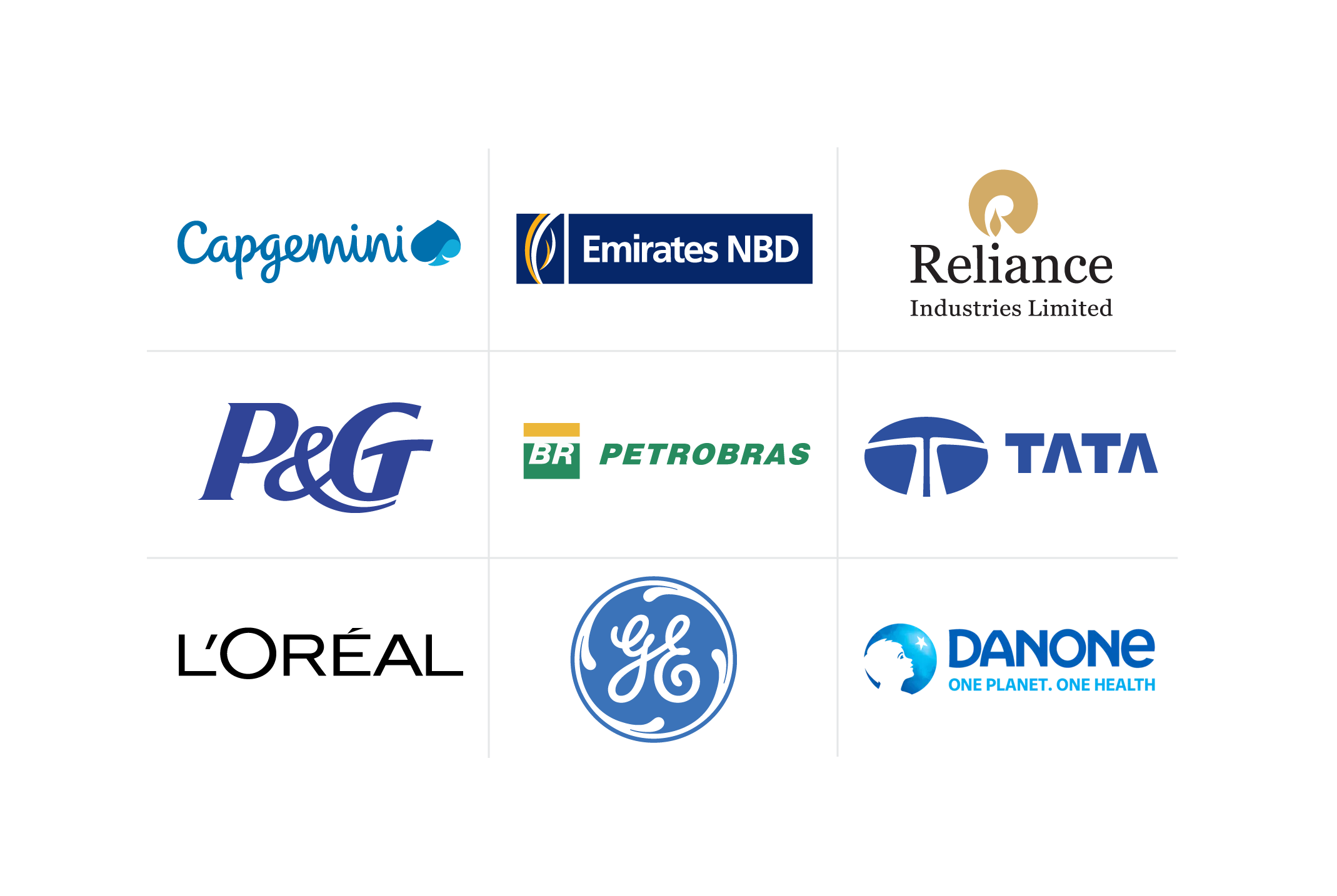The Importance of Learning and Development Strategy for Companies
Discover how a learning and development strategy can help your company attract and retain top talent, optimize your processes, and build professional relationships, as well as how to begin your own plan.
![[Featured Image] A corporate employee claps as the company’s leadership team unveils its new learning and development strategy to enhance employees' access to professional development opportunities.](https://d3njjcbhbojbot.cloudfront.net/api/utilities/v1/imageproxy/https://images.ctfassets.net/2pudprfttvy6/3h7mb4r6JyIpGQ6M1bSHhK/cc4d827002b22b0fd3335b8d438db880/GettyImages-1141462783.jpg?w=1500&h=680&q=60&fit=fill&f=faces&fm=jpg&fl=progressive&auto=format%2Ccompress&dpr=1&w=1000)
Learning and development, sometimes called professional development, is a process where you or your company provides education opportunities to increase your employees' job skills, knowledge base, and overall performance. These opportunities can include new employee training, compliance training, continuing education, professional organizations, and more.
Read on to explore how a learning and development strategy can help you increase the company’s allure to new hires and ability to retain top talent while developing a more skilled workforce.
What is a learning and development strategy?
A learning development strategy is a plan for how you and your organization will advance employees’ professional development and personal growth. It includes the types of training each employee will receive and how you will measure success. By offering learning and development programs for your employees, your company can benefit by increasing employees’ skill sets and productivity and boosting retention rates while having a positive impact on the culture.
Why is a learning and development strategy important?
Companies implement learning and development strategies for five main reasons: to attract and retain talented team members, develop the skills of their workforce and increase capability, motivate employees, build professional relationships, and encourage future leadership.
Let’s look at these learning and development goals and why they matter in greater detail.
Retain and attract skilled professionals: Offering a robust learning and development program to your workforce can help you attract and retain top talent. Many employees prefer to work with companies that offer career or professional development so you can use your program as a recruitment tool. Learning and development programs also help retain employees because they will be more skilled and less likely to burn out.
Develop workforce capability: Remember that your employees are a resource you need to invest in and maintain, helping them continue working at their best. Implementing a learning and development strategy can ensure that your staff stays up-to-date with industry trends and developments.
Motivate and engage the team: A culture of lifetime learning promotes overall happiness. Leadership and development programs also help employees feel more engaged, challenged, and satisfied by their work.
Build professional relationships and network opportunities: A learning and development strategy allows your employees to interact with each other in new ways, which can encourage bonds and camaraderie. It also gives your team an opportunity to develop their network and talk about the skills and interests that are important to them but not necessarily part of their daily work.
Encourage future leadership: A learning and development strategy can help you cultivate leadership within your staff. The next time you have a leadership position to fill, you will have strong internal candidates to consider.
Types of learning and development
Every company needs to create a learning and development strategy that meets the needs of its industry and workforce, helping propel the company towards its business goals. Since those factors vary between companies, all organizations will have different learning and development strategies. The following offers a look at some of the factors that will differentiate types of learning and development:
Location and instruction: You could choose to run learning and development initiatives in-house, using staff members to facilitate or instruct, or you can use a third-party company to offer learning and development programs on your behalf. Training may happen at your company’s standard location or business hours, off-site, or outside regular work hours.
Learning format: Learning and development programs can be one-on-one or in a group setting, as well as in a formal class or more casual conversation. The options can depend on the preference of your organization.
Learning content: Learning and development can take many forms, including new employee onboarding training, apprenticeships, mentoring programs, sales training, compliance training, management training, and more.

Key components of a successful learning and development strategy
You must customize your learning and development strategy to your company and employees. Meeting your organization’s unique requirements typically necessitates conducting a robust needs assessment and skills gap analysis, tailored learning programs, technology in learning, employee engagement and participation, and a culture of continuous learning.
Needs assessment and skill gap analysis
You could argue that needs assessment and skill gap analysis are critical parts of a learning and development strategy because they help you identify your organizational goals for development and how well your team’s skill set matches up with the needs of your company. These three factors (organizational goals, your team’s current skills, and the skills your company needs) inform every other part of your learning and development strategy. You can also use a skills gap analysis to better understand your employees’ personal and professional goals and how they assess themselves.
Tailored learning programs
Your learning and development strategy should include learning programs tailored to your business objectives and the learning needs of your employees. It should consist of a macro view of the skills your company needs to improve or expand on. Still, you can also take it to an individualized level with personal development plans for individual employees. You can consider employee skill level, learning style, and time constraints. For example, you could allow some employees to train in a small group during work hours, while others might prefer to complete training remotely on their own time.
Technology in learning
You can use technology in your learning and development strategy by leveraging e-learning platforms and tools to offer a wider variety of learning opportunities and resources to support your workforce learning. Remote learning is a flexible way to provide training for any schedule and allows your employees to learn at their own pace. You can also use e-learning components—such as forums or virtual office hours—to support in-person or ongoing learning activities.
Employee engagement and participation
Employees are more engaged in atmospheres that feature learning and development opportunities. At the same time, learning and development benefit from enthusiastic employees who participate. You can promote learning and development by fostering employee engagement by strengthening your onboarding and recruitment programs and encouraging employees to engage with learning and development by offering them opportunities to apply what they are learning to real-world concepts or projects.
A culture of continuous learning
The last component of a successful learning and development strategy is a company culture of continuous learning or lifetime learning. Education or skill opportunities demonstrate that ongoing learning is vital to your company. As a leader, you can help promote a learning culture by prioritizing professional development for the company, ensuring that your employees have the resources they need to succeed in professional development, and remaining optimistic about the experience and benefits of learning and development.
Overcoming challenges in learning and development
Implementing a robust learning and development strategy can be challenging. The following explores some of the common obstacles you might encounter and how to avoid them, including budget and resource constraints, leadership buy-in, and the diversity of a learning and development program.
Budget constraints and resource allocation
You can do many things to make learning and development less expensive and time-consuming, but you can’t entirely get around these factors. Learning and development require an investment of resources, one way or the other. One way to manage this challenge is through communication and measuring return on investment. It’s essential that your learning and development activities relate to your company’s goals for professional development so you can measure their success and see the impact of your investment in a more tangible way.
Measuring ROI and gaining stakeholder buy-in
One challenge of a learning and development strategy is measuring and demonstrating to company leadership that learning activities are worth the time and money they divert from other company activities. Leadership must understand and embody the value of learning and development to promote a company culture that prioritizes employee growth.
Measure the impact of your learning initiatives through goal-oriented metrics that directly show effectiveness compared to the program's overall goals. For example, if your program aims to increase accuracy, you might measure the effectiveness of your learning and development based on a reduction in errors.
Managing a diverse set of learning programs
Another common challenge to overcome with learning and development is managing the diverse needs of your workforce. Your learning and development strategy might include different kinds of programs, such as onboarding or regular compliance training. You are also providing learning opportunities to individuals with varied learning needs and goals for their learning. Implementing tools like online learning and modular or microlearning segments to offer continuous learning opportunities that all employees can manage and have some control over when and how they learn can help manage this challenge and enhance the program’s effectiveness.
Getting started with Coursera
As you can see, a robust learning and development strategy can help you attract and retain talent, keep your employees informed and engaged, deepen the skill set of your workforce, and promote a culture of learning. Reviewing the options for leadership and development on Coursera is one way to start planning your learning strategies.
With Coursera for Business, you can train teams across your organization in the skills that matter most in today’s digital economy. Your employees will gain access to content from 350+ leading universities and industry partners, where they can build real-world experience with innovative skills, tools, and technologies while earning globally recognized credentials. Our customizable, scalable learning solutions balance workplace skills and technical skills training in diverse formats, from video clips to guided projects and Professional Certificates. Accelerate your digital transformation and equip employees to drive growth with Coursera.
This content has been made available for informational purposes only. Learners are advised to conduct additional research to ensure that courses and other credentials pursued meet their personal, professional, and financial goals.

